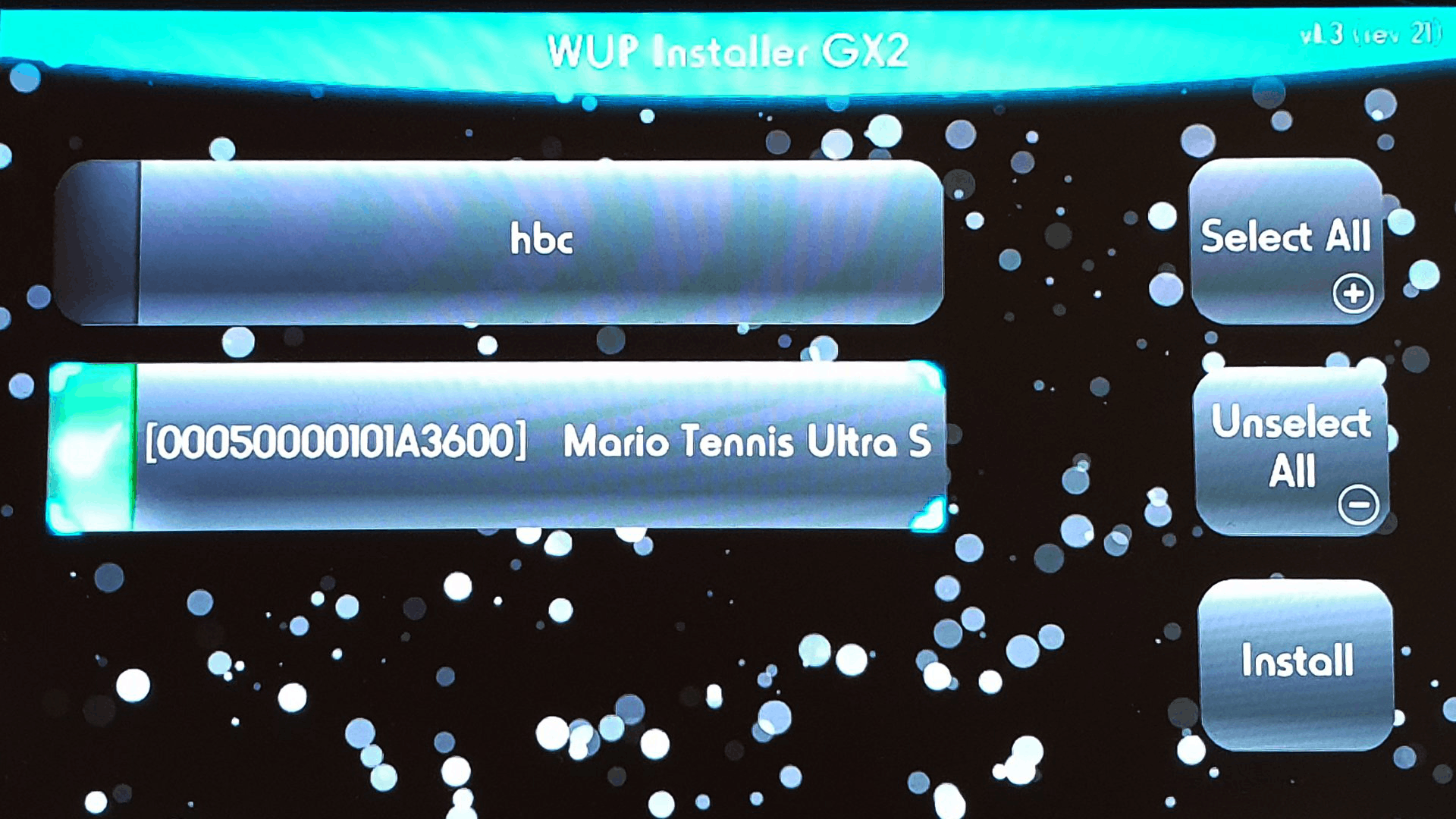

- Unable to load the homebrew launcher wii u install#
- Unable to load the homebrew launcher wii u update#
- Unable to load the homebrew launcher wii u software#
- Unable to load the homebrew launcher wii u code#
About 10% of the consoles that ran the BootMii Checker tool have the new boot1, however, this percentage is now higher, as BootMii Checker was distributed shortly after boot1c was released.
Unable to load the homebrew launcher wii u update#
Since boot1 cannot be updated, all consoles already manufactured before this update are safe. The Hackmii Installer will detect this situation and refuse to modify boot2 (see more at Hackmii). No such hardware exists yet though.Ĭonsoles made after some point in 2008 (no concrete date is known) have a new version of boot1 that patches the vulnerability which allows the console to boot a modified boot2.
Unable to load the homebrew launcher wii u software#
However, special hardware might help accomplish things that BootMii by itself cannot, such as hardware NAND write protection and isolation from the Nintendo software stack.
Unable to load the homebrew launcher wii u install#
Support for newer Wiis (with reduced functionality) will have to install BootMii as an IOSįor an SD card compatibility list, See SD Card Compatibility List.īootMii will not require any special hardware.
Unable to load the homebrew launcher wii u code#
For versions of BC with fakesigning, mini includes code to go directly to boot2 to ensure MIOS loads fine.īootMii should be compatible with most Wiis released before late 2008. There are two major advantages to this: first, if the installation is interrupted, the second copy will still function normally to boot second, when boot2 is loaded by BC, an updated version of BC will reject BootMii due to an invalid signature, but the second copy can still be loaded fine. Otherwise, it loads the real boot2, which remains intact when BootMii-boot2 is installed.īootMii also only installs into the first copy of boot2. The second section checks to see if an SD card is inserted if so, it loads /bootmii/armboot.bin and executed it. The space normally allocated for the NANDLoader is split into two sections itself for technical reasons the first section is a custom NANDLoader that loads the second section.

Along with the 4.2 update, Nintendo released a new version of boot2 ( boot2v4) there is nothing in boot2v4 that prevents BootMii from working, but it will overwrite an existing BootMii installation when it is installed. Unfortunately, the only way we could completely stop Nintendo from blocking homebrew is by patching updates on-the-fly, or somehow preventing overwriting boot2. This has many advantages, such as making it very difficult to brick, and slowing Nintendo from blocking homebrew. BootMii hijacks the boot process before the normal boot2 is run, optionally allowing code to be run directly from the SD Card. This means it can be hacked, updated, and corrupted. boot2, however, can be modified (with some restrictions). boot1, although stored on the NAND, is signed by a value in write-once memory and therefore cannot be changed without rendering a console unable to boot. boot0 is part of Hollywood and read-only. However, there is mini (a homebrew IOS-like software), which can be modified specifically for the program, ie, for better communication to the Linux kernel.īootMii-boot2 is a modified version of boot2's NANDLoader, which is loaded by boot1, which is loaded by boot0. Unfortunately, all homebrew currently require an IOS, because libogc requires one. For example, if you have corrupted the System Menu, you can use DOP-Mii to reinstall the System Menu. Source code is available under GPLv2 at (tbd).īoth mini and CEIL1NG_CAT must be present in order to draw a user interface, because the Starlet cannot directly access the Video Interface.īootMii allows anything from Recovery modes (creating a practically unbrickable Wii), to lazy access of the Homebrew Channel. If it exists, mini loads this executable into memory, boots up the Broadway (ppc) and executes that binary in parallel with mini. CEIL1NG_CAT (or bootmii-ppc) - When mini runs, it looks for a file named /bootmii/ppcboot.elf on the SD card.Source code is available under GPLv2 here. mini - This is a rudimentary replacement for IOS that is best suited for low-level recovery functions.

Otherwise, it will fall back to loading boot2. If so, it tries to load and execute /bootmii/armboot.bin instead of boot2. When run, it looks to see if an SD card is inserted.


 0 kommentar(er)
0 kommentar(er)
